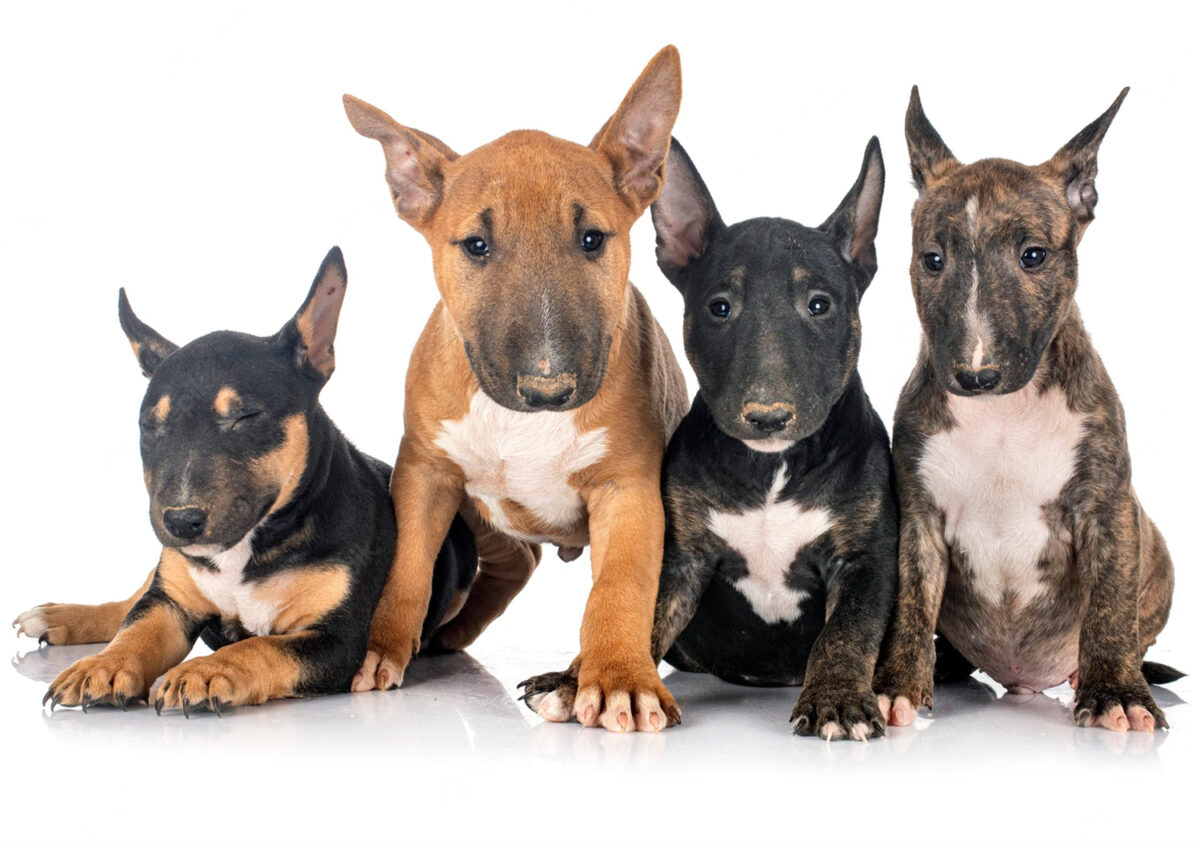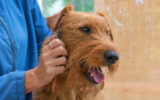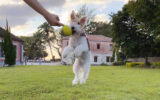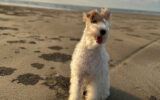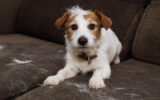Many of our pet dogs today came from a line of purpose-bred breeds, and with ‘great responsibilities come innate personalities’. Terriers were initially bred for hunting, therefore it is in their nature to be adventurous and fearless.
Some terriers are genetically more aggressive, but not untrainable. In a scientific report[1] published in May 2021 on Nature.com, studies done on 23 purebreds showed that breed was not a major contributing factor toward aggressive behaviours, and terriers were not the most aggressive.
Aggression, like in many breeds, was bred into terriers as a defense mechanism. And if boundaries are not respected, this defense mechanism will trigger a response.
But instead of focusing on the aggressive trait of a specific breed, it’s actually the triggered responses in a terrier that you should pay attention to, and provide adequate training to guide the terrier into producing the responses you want.
With proper training, terriers can be just as well-behaved around humans, children, and animals, and make for an excellent family pet. But first, you’ll need to understand the personalities and traits of terriers.
Table of Content
- What Are the Personalities and Traits of a Terrier?
- Why Is My Terrier Aggressive, What Should I Do?
- Body Languages – Spot It Before It Escalates
- Are Terriers Aggressive Toward Other Dogs?
- What Are the More Aggressive Terrier Breeds?
- What Are the Least Aggressive Terrier Breeds?
- Are Terriers Aggressive Toward Children?
- Do Terriers Make Good Family Pets?
- Conclusion
What Are the Personalities and Traits of a Terrier?
The terrier group has a wide variety of different breeds, from the giant Airedale Terrier to the petite Yorkshire Terrier. And within this range, there will be slight variances of personalities as a result of the different gene pools they’re bred with.
The general personality traits of a terrier include alertness, bravery, energy, and independence. They are an intelligent breed, and despite their stubbornness, they’re highly trainable and are perfect for active individuals or households.
Terrier personalities and traits can be further broken down into different breeds. Like in the case of a Bull Terrier who never backs down. And in the case of a Jack Russell or Wire Fox Terrier, they tend to be more stubborn and refuse to give up.
One other thing you should know about terriers is, they were initially bred for solo work during their hunting days. Therefore, they’re very independent and may not always enjoy the company of other dogs.
And as much as socialization can teach a dog how to behave in a group, it doesn’t change their need to defend themselves. Thus, in any situation when they feel threatened, a response may be triggered.
The response, however, may or may not be aggressive. This is where ‘Nurture V.S. Nature’ plays a big part. Depending on how, and in what kind of an environment, was the terrier brought up, these triggered responses will vary differently, even within the same breed.
In a study on ‘Relationship between aggressive and avoidance behaviour by dogs and their experience in the first six months of life’, it is believed that dogs’ behaviour is more prone to be affected (or developed) by situations during the earlier period of their development.

Non-domestic maternal environments, and a lack of experience with urban environments between three and six months of age, were both significantly associated with aggression towards unfamiliar people and avoidance behaviour (Appleby et al., 2002).
Therefore, the earlier you expose your dog to the environment, humans, and other dogs, the easier it is to teach and correct behaviours as you both grow together.
This is especially true for terriers. Early socialization can teach terriers to tolerate other animals better. The more they experience as a ‘Norm’, the lesser ‘Abnorm’ will there be for them to be reactive, defensive, or aggressive about.
Why Is My Terrier Aggressive, What Should I Do?
First, we need to define aggression, not every ‘teeth-showing’ moment is a sign of pre-attack expression. Unless it’s coupled with other indicators such as tensing of the facial muscles, narrowed eyes, growling, snapping, and to the extent of biting.
Common causes of aggression in dogs are feeling threatened or fearful, possessive, frustrated, and protective against unfamiliar humans, animals, or sound. The only difference with terriers in a ‘Fight or Flight’ situation is they’re more likely to ‘fight’, turning reaction into aggression.
But in most cases, the initial responses that we see in a terrier such as growling or snarling are considered reactive behaviours. This is their way of expressing their dismay about something or reacting to make the situation go away.
If situations aren’t resolved, these reactive behaviours can escalate into aggressive behaviours such as lunging forward, making physical contact, and continuous biting when another person or animal is involved.
The key here is to first understand their body language and spot the moment before things escalate. Use it as an opportunity to provide necessary behavioural corrections.
Body Language
| Signs of Friendliness | Signs of Anxiety | Signs of Arousal | Signs Prior to Bite |
|---|---|---|---|
| Relaxed body, ears, tail | Yawning when not tired | Ears forward, mouth closed | Signs of anxiety or arousal |
| Happy expression | Lip licking | Eyes intense, showing more white | Intense eye contact |
| Wagging tail, wag that wiggles whole body | Sudden scratching | Body forward, tense | Showing whites of eyes |
| Play bow | Sniffing | Tail high, slowly wagging | Growling |
| Rolling over | Panting | Hackles raised | Showing teeth |
| Lean in for petting | Tail tucked under the body | Tense body | |
| Soft eyes, gentle gaze |
In general, most aggressive behaviours can be trained out of or minimized for a terrier, especially when it’s done early during their puppy phase. But bear in mind that owners’ behaviours and temperaments can affect dogs’ mental states too.
An owner’s fear, anxiety, and over-reaction during a situation can be sensed by a dog, which may escalate the situation further, causing it to be uncontrollable. Hence, remember to always be firm and stay calm, it just may make a difference in a ‘Fight or Flight’ situation.
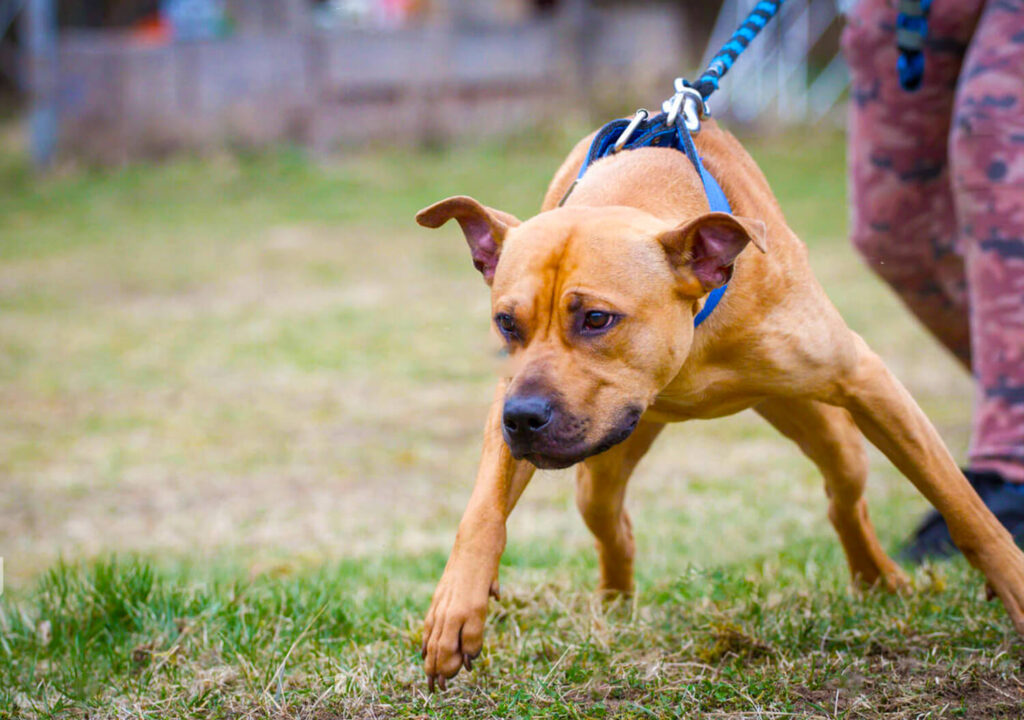
Preventive measures should also be planned ahead. Understand what triggers your terrier into aggression, is it a particular place or smell, a certain dog or person. Avoid putting your terrier in these situations ahead of time whenever possible.
If you have a rescued dog or inherited an adult dog, you will want to consider taking it to a dog psychologist or behaviourist first to assess its cause of aggression. And with the help of a behaviourist or trainer, make the necessary corrections.
Lastly, be a responsible parent. Sending your terriers off to a shelter or putting them down is a tough decision to make, and should always remain your very last option.
So to prevent having to make difficult decisions down the road, do your research prior to getting a dog (rescued or bought), and seek help and advice from professionals when needed.
Our puppies maybe just a part of our lives, but to them, we’re their everything.
Are Terriers Aggressive Toward Other Dogs?
Any dog, regardless of breed, can be aggressive toward other dogs for many reasons. Competing for dominance, prior negative experience with other dogs, genes, and dogs that haven’t been neutered/spayed, can all be the source of aggression.
Genetically, not all terriers are, but some breeds do have the tendency to become aggressive toward other dogs. Without proper training and socialization, things can get out of hand. Even if they don’t start a fight, they won’t back down from one.
What Are the More Aggressive Terrier Breeds?
The breeds mentioned below are considered to be more aggressive only within the terrier group, it should not be mistaken as a comparison to all dog breeds.
- Airedale Terrier
- Staffordshire Terrier
- Bedlington Terrier
- Bull Terrier
- Jack Russell Terrier
- Smooth/Wired Fox Terrier
- Yorkshire.
What Are the Least Aggressive Terrier Breeds?
On the other end of the scale, the following list is generally considered more tolerant breeds within the terrier group.
- Australian Terrier
- Border Terrier
- Boston Terrier
- Norfolk Terrier
- Soft-coated Wheaten Terrier
- West Highland Terrier
Are Terriers Aggressive Toward Children?
Not all terriers are good with children, especially when they’re not being introduced to the child from a young age. Smaller terriers may also get overly excited during play, and accidentally nip or bite.
You should also be aware that when aggression arises, the cause may not always be the terriers, but the way kids interact with their pet terriers.
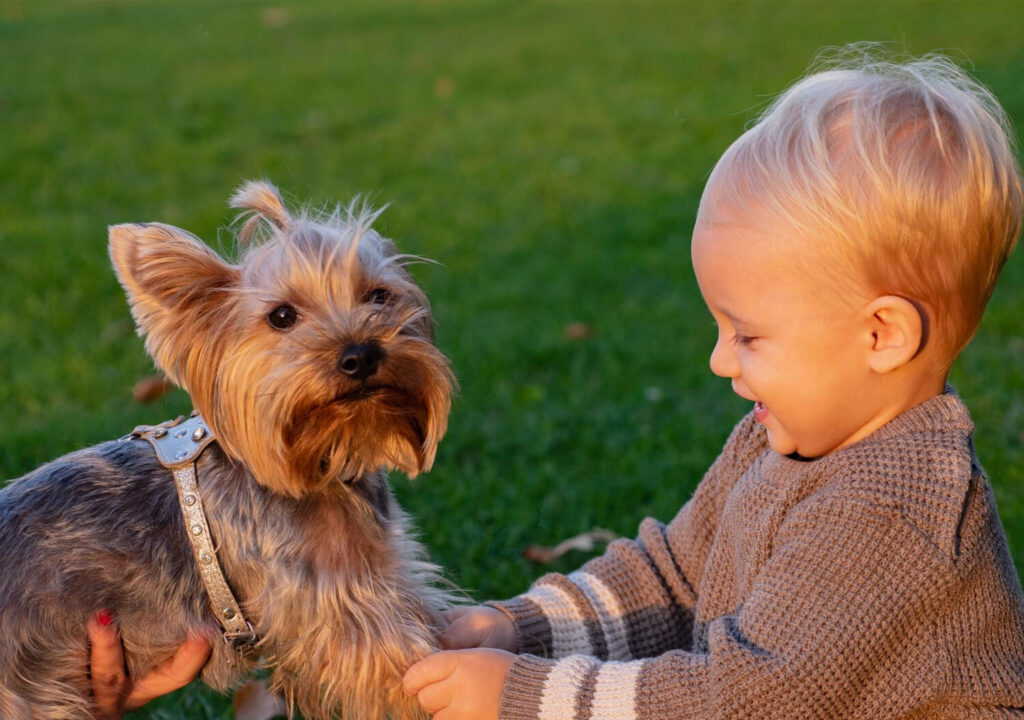
Young children can be loud (screamings, crying, etc.) during play. Sometimes, kids may be exertive when handling their pets, and unintentional hitting, pulling, or kicking can be too much to bear.
If you have kids but would still want a terrier, you might want to consider breeds from the ‘Least Aggressive Terrier Breed’ list. They’re more suitable for households with small children under the age of 5.
Do Terriers Make Good Family Pets?
Terriers do make for a good family pet. Despite their feisty nature, they’re very trainable breeds and if you’re able to provide adequate training from a young age, they can be a wonderful addition to your family.
And if you have an active household, always up for an adventure, then a terrier can definitely keep up with you and be a great companion for the family.
Conclusion
Terriers are feisty by nature, and nature does play a big part in shaping their personalities. But in most cases, it is the lack of proper training and guidance in teaching the dog to respond appropriately that becomes the problem.
Care should always be taken to understand your terriers and the environment you put them in, and create a lifestyle that is constructive for both you and your pup.
What are the terrier breeds you love the most?
References


